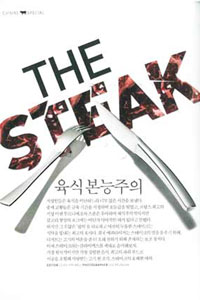One influential Korean restaurateur and beef expert, Young-sik Park, chief executive officer of SG Dine Hill which operates six high-end restaurants in Seoul, commented in the article that U.S. beef is “nutritionally great,” and referenced a “healthy menu campaign” which recommends that children eat red meat daily.
Similarly, the meat buyer for the upscale Shilla Hotel, Yong-ju Lee, stated his confidence in U.S. beef because the cattle are raised on corn, soybeans and grass, and “vitamin-packed” chilled beef is imported to Korea without preservatives.
 “As more Koreans travel around the world, the more familiar they become with premium cuisine,” said USMEF’s Yang. “The trend toward focusing a beef menu on U.S. prime beef started with Goo STK, a Seoul restaurant that made its name by serving only U.S. prime steaks. Now, U.S. beef is rising in the perception of consumers who view it as the centerpiece of a special meal.”
“As more Koreans travel around the world, the more familiar they become with premium cuisine,” said USMEF’s Yang. “The trend toward focusing a beef menu on U.S. prime beef started with Goo STK, a Seoul restaurant that made its name by serving only U.S. prime steaks. Now, U.S. beef is rising in the perception of consumers who view it as the centerpiece of a special meal.”A report issued last week by South Korea’s Rural Economic Institute (KREI) was fairly bullish for U.S. beef consumption in Korea, noting that a January 2012 survey found that 52.3 percent of consumers had purchased U.S. beef compared to 48 percent in 2011 and just 22 percent in 2010. When consumers who purchase U.S. beef were asked what they would cut back on in favor of U.S. beef, about 41 percent said Australian beef and 30 percent said domestic beef.
Per capita beef consumption increased by more than 20 percent in 2011 to 10.7 kg (23.5 pounds). This is a remarkable increase of nearly 60 percent from 2005 and 2006 when U.S. beef was absent from the market.
Through the first 11 months of 2011, U.S. beef exports to South Korea were up 38 percent in volume and 32 percent in value versus 2010, reaching 139,663 metric tons (307.9 million pounds) valued at $618.3 million.
—U.S. Meat Export Federation press release
PHOTOS
TOP RIGHT AND LEFT:Pages from the Korean lifestyle magazine,Luxury.Photos courtesy of U.S. Meat Export Federation.









